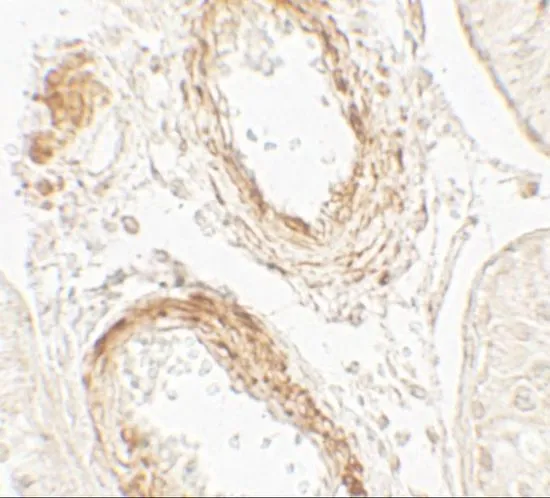GOLGA5 antibody [N2C2], Internal
GTX104255
ApplicationsImmunoFluorescence, Western Blot, ImmunoCytoChemistry, ImmunoHistoChemistry, ImmunoHistoChemistry Paraffin
Product group Antibodies
TargetGOLGA5
Overview
- SupplierGeneTex
- Product NameGOLGA5 antibody [N2C2], Internal
- Delivery Days Customer9
- Application Supplier NoteWB: 1:500-1:3000. ICC/IF: 1:100-1:1000. IHC-P: 1:100-1:1000. *Optimal dilutions/concentrations should be determined by the researcher.Not tested in other applications.
- ApplicationsImmunoFluorescence, Western Blot, ImmunoCytoChemistry, ImmunoHistoChemistry, ImmunoHistoChemistry Paraffin
- CertificationResearch Use Only
- ClonalityPolyclonal
- Concentration1 mg/ml
- ConjugateUnconjugated
- Gene ID9950
- Target nameGOLGA5
- Target descriptiongolgin A5
- Target synonymsGOLIM5, RFG5, ret-II, golgin subfamily A member 5, RET-fused gene 5 protein, cell proliferation-inducing gene 31 protein, golgi autoantigen, golgin subfamily a, 5, golgi integral membrane protein 5, golgin-84
- HostRabbit
- IsotypeIgG
- Protein IDQ8TBA6
- Protein NameGolgin subfamily A member 5
- Scientific DescriptionThe Golgi apparatus, which participates in glycosylation and transport of proteins and lipids in the secretory pathway, consists of a series of stacked cisternae (flattened membrane sacs). Interactions between the Golgi and microtubules are thought to be important for the reorganization of the Golgi after it fragments during mitosis. This gene encodes a member of the golgin family of proteins, whose members localize to the Golgi. This protein is a coiled-coil membrane protein that has been postulated to play a role in vesicle tethering and docking. Translocations involving this gene and the ret proto-oncogene have been found in tumor tissues; the chimeric sequences have been designated RET-II and PTC5. [provided by RefSeq]
- Storage Instruction-20°C or -80°C,2°C to 8°C
- UNSPSC12352203
References
- Enrichment of microsomes from Chinese hamster ovary cells by subcellular fractionation for its use in proteomic analysis. Perez-Rodriguez S et al., 2020, PLoS OneRead more
- Genome-wide CRISPR screening identifies new regulators of glycoprotein secretion. Popa S et al., 2019, Wellcome Open ResRead more
- Selective serotonin reuptake inhibitor, fluoxetine, impairs E-cadherin-mediated cell adhesion and alters calcium homeostasis in pancreatic beta cells. Chang HY et al., 2017 Jun 14, Sci RepRead more
- A CREB3-ARF4 signalling pathway mediates the response to Golgi stress and susceptibility to pathogens. Reiling JH et al., 2013 Dec, Nat Cell BiolRead more





